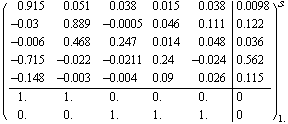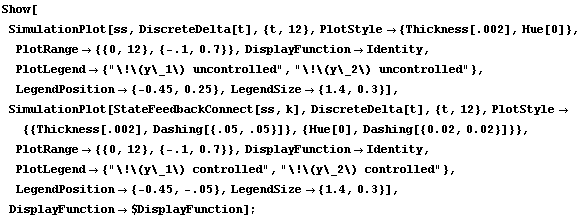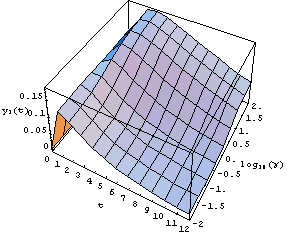|
3.2.5 LQR and LQG Designs Using Riccati Equations
The following computations illustrate the continuous-time LQR and LQG gains for a model of a steam power system using the matrix Sign-function methods.
This is the discrete-time state-space model of a power system.
In[23]:=
Out[23]=
The weighting matrices are chosen to be identity matrices of the appropriate dimensions scaled with the parameter  . .
In[24]:=
This computes the discrete-time LQR gain for the scaling parameter  using the matrix Sign-function method. using the matrix Sign-function method.
In[25]:=
Out[25]=
In a comparison of simulated impulse responses for uncontrolled and controlled systems, the controlled system has a faster response.
In[26]:=

This plots the impulse response of the first output variable of the controlled system for various scalings of the weighting matrices of the LQR regulator computed via the Schur method. The response diminishes from  (cheap control case is when (cheap control case is when   0) to 0) to  (minimum energy control is when (minimum energy control is when    ). ).
In[27]:=
In[28]:=

|




